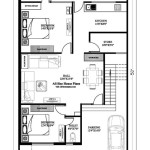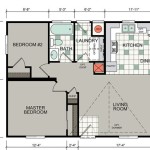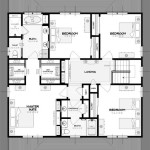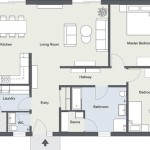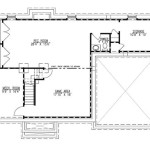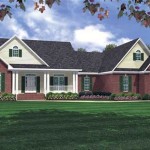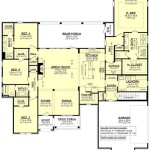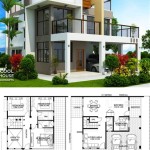Hill Country Home Plan Designs: A Guide to Rustic Elegance
Hill Country home plan designs evoke a sense of rustic elegance, drawing inspiration from the natural beauty of the Texas Hill Country. These designs typically prioritize open spaces, natural light, and a seamless integration with the surrounding environment. The architectural style often incorporates regional materials like limestone, wood, and metal, creating homes that are both aesthetically pleasing and functionally suited to the climate. Understanding the key elements and considerations involved in Hill Country home plan designs is crucial for anyone considering building or renovating a home in this style.
The hallmark of a well-executed Hill Country home plan lies in its ability to harmonize with the landscape. Designers frequently consider the topography, vegetation, and prevailing winds when positioning the house on the lot. This careful planning minimizes environmental impact and maximizes the advantages of the site, such as views and natural shade. The resulting homes are often characterized by a strong connection to the outdoors, with features like expansive porches, patios, and outdoor living areas.
Key Elements of Hill Country Home Plan Designs
Several defining characteristics distinguish Hill Country home plan designs. These elements contribute to the overall aesthetic and functionality of the homes, reflecting the region's unique character and lifestyle.
Natural Materials: The extensive use of natural materials is perhaps the most recognizable feature of Hill Country architecture. Limestone, a readily available resource in the region, is frequently used for exterior walls, cladding, and landscaping. Wood, both reclaimed and new, is also prominent, often appearing in exposed beams, floors, and trim. Metal accents, such as corrugated metal roofing and wrought iron railings, add a touch of industrial chic. These materials not only contribute to the rustic aesthetic but also offer durability and weather resistance.
Open Floor Plans: Hill Country homes typically feature open floor plans that promote a sense of spaciousness and facilitate social interaction. Kitchens, living rooms, and dining areas often flow seamlessly into one another, creating a central hub for family activities and entertaining. This design approach also allows for better natural light penetration and ventilation, enhancing the overall comfort of the home.
Expansive Outdoor Living Spaces: Given the mild climate and scenic surroundings of the Hill Country, outdoor living spaces are an integral part of the home design. Large porches, covered patios, and outdoor kitchens provide ample opportunities for relaxation and recreation. These spaces are often designed to extend the living area of the home, blurring the boundaries between indoors and outdoors. Fireplaces and outdoor seating areas further enhance the functionality and appeal of these spaces, making them suitable for year-round use.
Considerations for Designing a Hill Country Home
Designing a Hill Country home requires careful consideration of several factors, including the local climate, building codes, and personal preferences. A successful design balances aesthetic appeal with practical functionality, creating a home that is both beautiful and livable.
Climate Adaptation: The Texas Hill Country experiences hot summers and mild winters, necessitating design strategies that promote energy efficiency and thermal comfort. Proper insulation, strategically placed windows, and passive solar design principles can help minimize energy consumption and maintain a comfortable indoor temperature year-round. Overhangs and porches provide shade during the hottest hours of the day, while cross-ventilation can help cool the home naturally. Consideration should also be given to water conservation, with rainwater harvesting systems and drought-tolerant landscaping becoming increasingly popular.
Site Integration: As mentioned earlier, careful site integration is crucial for a successful Hill Country home design. The home should be positioned to take advantage of natural light, views, and prevailing winds, while minimizing disturbance to the surrounding environment. Retaining walls and terracing can be used to create level building pads on sloping sites, while native vegetation should be preserved or incorporated into the landscaping plan. Attention should also be given to drainage and erosion control, ensuring that rainwater is properly managed to prevent damage to the property.
Local Building Codes and Regulations: Before embarking on a Hill Country home project, it is essential to familiarize oneself with local building codes and regulations. These regulations may govern aspects such as setbacks, height restrictions, and material choices. Working with a qualified architect or builder who is familiar with the local regulations can help ensure that the project complies with all applicable requirements. Additionally, some areas may have specific design guidelines aimed at preserving the character of the Hill Country architecture.
Customization and Personalization
While Hill Country home plan designs share common characteristics, there is ample opportunity for customization and personalization. Homeowners can tailor the design to reflect their individual tastes and lifestyles, creating a home that is truly unique.
Interior Finishes and Details: The choice of interior finishes and details can significantly impact the overall look and feel of a Hill Country home. Rustic wood flooring, exposed beams, and stone fireplaces can enhance the rustic charm of the design. Custom cabinetry, handcrafted lighting fixtures, and unique hardware can add a touch of personality and sophistication. The key is to select materials and finishes that complement the overall aesthetic and create a cohesive design.
Layout Modifications: While open floor plans are common in Hill Country homes, the specific layout can be customized to suit individual needs. For example, homeowners may choose to add a media room, home office, or guest suite. The size and configuration of the bedrooms and bathrooms can also be adjusted to accommodate the homeowner's preferences. The goal is to create a functional and comfortable living space that meets the specific needs of the family.
Outdoor Features: Beyond the standard porches and patios, homeowners can add a variety of outdoor features to enhance their Hill Country home. Swimming pools, outdoor kitchens, and fire pits can create a resort-like atmosphere, while gardens and walking paths can provide opportunities for relaxation and enjoyment of the natural surroundings. The landscaping plan should be carefully designed to complement the architecture and integrate seamlessly with the surrounding environment. The use of native plants and sustainable landscaping practices can further enhance the beauty and ecological value of the property.
The selection of windows and doors is vital in Hill Country home design, both for aesthetic appeal and energy efficiency. Windows should be strategically placed to maximize natural light and views. Large windows and sliding glass doors can create a seamless connection between indoor and outdoor living spaces. Energy-efficient windows, such as those with low-E coatings and insulated frames, can help reduce energy consumption and maintain a comfortable indoor temperature. Doors should be chosen to complement the overall design and provide security and weather protection. Solid wood doors with decorative hardware can add a touch of rustic charm, while modern steel doors can offer a sleek and contemporary look.
Lighting also plays a crucial role in Hill Country home design, both indoors and outdoors. Natural light should be maximized during the day, while artificial lighting should be carefully planned to create a warm and inviting atmosphere at night. Recessed lighting, pendant lights, and sconces can be used to create different levels of illumination and highlight architectural features. Outdoor lighting should be used to enhance the safety and security of the property, as well as to create a welcoming ambiance. Landscape lighting can be used to highlight trees, shrubs, and other features in the garden, while path lighting can provide safe passage along walkways.
In conclusion, Hill Country home plan designs offer a unique blend of rustic charm and modern functionality. By incorporating natural materials, open floor plans, and expansive outdoor living spaces, these homes create a strong connection to the surrounding environment. Careful consideration of climate adaptation, site integration, and local building codes is essential for a successful design. With ample opportunity for customization and personalization, homeowners can create a Hill Country retreat that reflects their individual tastes and lifestyles.

Custom House Plans Hill Country

Plan 51800hz Hill Country Ranch Home With Vaulted Great Room House Plans Craftsman Family

Hill Country Plan 7500

Hill Country Contemporary Archived Projects Portfolio Olson Defendorf Custom Homes

Plan 430048ly Contemporary 4 Bed Hill Country Home With Bathrooms For Everyone House Plans Homes

News Media Christofilis Custom Homes

Hill Country Ranch S2786l House Plans Over 700 Proven Home Designs By Korel

Floor Plans Hill Country Classics Custom Homes

Plan 68638vr Hill Country Ranch Home With Dramatic Family Room House Plans

Hill Country Custom Home Mediterranean Exterior Austin By Dawn Hearn Interior Design Houzz

